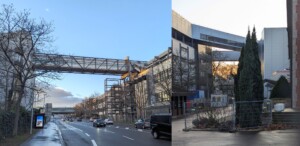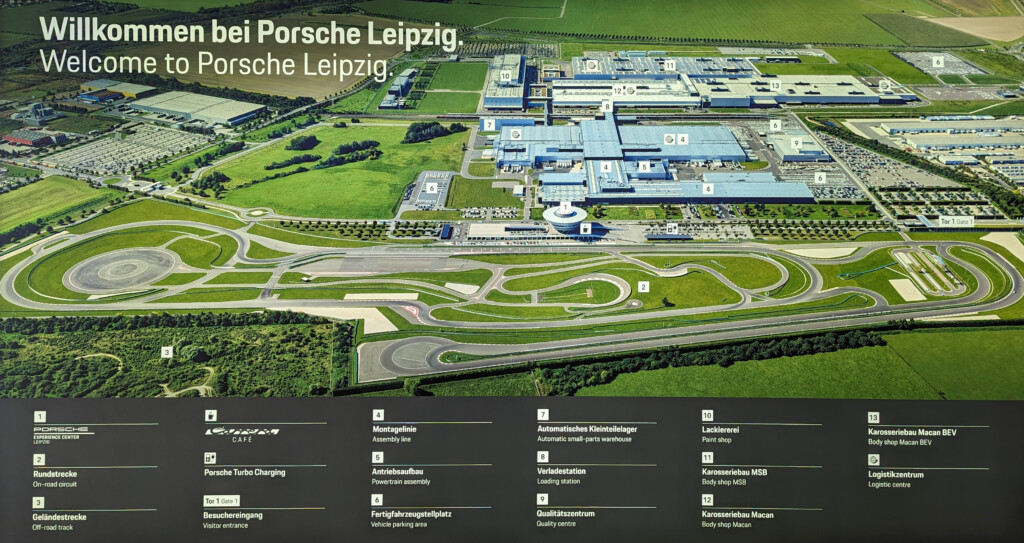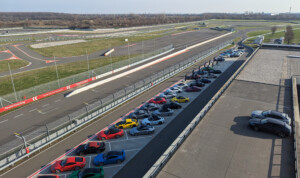 Porsche is part of the Volkswagen group. Yet, this luxury sports car maker maintained its own style and the shop floor feels (and performs) different from the Volkswagen group. In this blog post, I will look deeper into the main plant in Zuffenhausen and the second manufacturing location in Germany, Leipzig. The next blog post looks in detail at three Porsche assembly lines, from the oldest to the newest. The oldest is the forty-year-old 911 & 718 Cayman line in Zuffenhausen; then the twenty-year-old line for the Panamera and Macan in Leipzig; and finally the line for the electric Taycan in Zuffenhausen from 2020.
Porsche is part of the Volkswagen group. Yet, this luxury sports car maker maintained its own style and the shop floor feels (and performs) different from the Volkswagen group. In this blog post, I will look deeper into the main plant in Zuffenhausen and the second manufacturing location in Germany, Leipzig. The next blog post looks in detail at three Porsche assembly lines, from the oldest to the newest. The oldest is the forty-year-old 911 & 718 Cayman line in Zuffenhausen; then the twenty-year-old line for the Panamera and Macan in Leipzig; and finally the line for the electric Taycan in Zuffenhausen from 2020.
Disclaimer: The following is based on my personal observations and opinions and may not be accurate or correct. It is based on publicly available information and what I observed during public tours, and when I observed it. The observations may differ at a different time and place.
Porsche
 Porsche, or formally the Dr. Ing. H.C. F. Porsche Aktiengesellschaft is a German maker of luxury sports cars. Founded in 1931, it makes the most iconic and recognizable passenger car. It makes around 300 000 cars per year (2023), which deems it small by quantity. But due to the price of their cars, their revenue is significant.
Porsche, or formally the Dr. Ing. H.C. F. Porsche Aktiengesellschaft is a German maker of luxury sports cars. Founded in 1931, it makes the most iconic and recognizable passenger car. It makes around 300 000 cars per year (2023), which deems it small by quantity. But due to the price of their cars, their revenue is significant.
In 2008 and 2009, Porsche tried to take over the more than ten times larger Volkswagen by buying its stock, owning more than 50% of Volkswagen at its peak. This was quite daring. However, it got into conflict with the powerful VW union and the state of Lower Saxony which also owned 20% of VW, and annoyed the banks which lost a lot of money due to the stock price going up. In the end, the whole thing failed and VW ended up taking over Porsche instead.
 Yet, this is not the end. In September 2022, Oliver Blume became CEO of Volkswagen. Since 2015, he has also been the CEO of the Porsche subsidy. Hence, now the CEO of Porsche is also the CEO of Volkswagen. He brought Porsche back into the stock market with an IPO in September 2022. He soon put people he trusted in key positions at Volkswagen… which happened to be his people from Porsche. Hence, a lot of the management of VW consists of former Porsche people. Blume is definitely bringing the Porsche way of doing things to Volkswagen by increasing speed, discipline, and efficiency (which, honestly, may not be bad for Volkswagen). One journal called this a “friendly takeover.” Of course, not everybody is happy about “Porsche first” at Volkswagen. Audi especially is losing power and got a few new electric car models, which now use a Porsche frame, axed.
Yet, this is not the end. In September 2022, Oliver Blume became CEO of Volkswagen. Since 2015, he has also been the CEO of the Porsche subsidy. Hence, now the CEO of Porsche is also the CEO of Volkswagen. He brought Porsche back into the stock market with an IPO in September 2022. He soon put people he trusted in key positions at Volkswagen… which happened to be his people from Porsche. Hence, a lot of the management of VW consists of former Porsche people. Blume is definitely bringing the Porsche way of doing things to Volkswagen by increasing speed, discipline, and efficiency (which, honestly, may not be bad for Volkswagen). One journal called this a “friendly takeover.” Of course, not everybody is happy about “Porsche first” at Volkswagen. Audi especially is losing power and got a few new electric car models, which now use a Porsche frame, axed.
From my lean point of view, Porsche is the best group in the VW family that I visited (namely, Audi and Volkswagen). In my opinion, their best line is much better than any other VW group line I saw, close to the Japanese plants. Albeit, in Germany, BMW is still significantly better in my view. But more on this later.
Porsche Zuffenhausen

Zuffenhausen near Stuttgart is the headquarters of Porsche. They started producing cars in 1938. Like almost all old plants, the nearby towns grew around them, and the plant is now surrounded by the town. This gives lots of space constraints, and a lot of production is on multiple floors. Multiple bridges transport material by criss-crossing the intersecting streets, and pillars for another new bridge are just being build diagonally across the plant.
There are 24 700 employees are in Zuffenhausen, 10% of which are temp workers. This includes a lot of designers, including 50 or so sound designers (exhaust, engine, doors, switches,…) and even olfactory (i.e., smell) designers. One curiosity: There is only a single indoor smoking corner left in all of Porsche Zuffenhausen… which happens to be right next to the union’s office. A pure coincidence, I am sure…
Due to the high demand, production operates in three shifts of seven hours each. They also make also engines for Audi and Lamborghini. They are expanding their warehouse capacity due to the problems with global supply chains in the last few years. One separate warehouse is for storing batteries for hybrid and electric vehicles to contain the risk of fire. A battery has never burned in Zuffenhausen, but their location in Bietigheim-Bissingen had a battery fire in 2021.
Porsche Leipzig
In comparison, the Leipzig plant is much newer. The plant started production in 2002 on a greenfield site. Hence, the material flow has much less restrictions, and follows a clear path. All production is on one floor only. Since 2002, the plant expanded by adding a press shop and expanded their test track. While Zuffenhausen has multiple lines, Leipzig has only a single line.

In Zuffenhausen I visited two final assembly lines, the 911 and 718, as well as the fully electric Taycan assembly line. In Leipzig, they have only one assembly line where they produce the Panamera and the Macan. Lets go through them from the oldest (forty-year-old line for the 911 Zuffenhausen) to the intermediate (twenty-year-old line in Leipzig) to the latest (five-year-old line for the Taycan in Zuffenhausen). But more on these assembly lines in the next post. Now, go out, study the production systems of your competitors to see what works (and what doesn’t), and organize your industry!
If You Want to Follow in My Footsteps

Porsche offers very good factory tours in their plants in Zuffenhausen and Leipzig. In Zuffenhausen, you can combine it with the nice Porsche Museum if you are also interested into Porsche design and history. Tickets can be booked for the museum and the plant tour in Zuffenhausen here, and for the Porsche Experience Center in Leipzig here. Both tours take around 90 minutes and bring you right up close to the assembly line. You do have to leave your mobile behind in a locker in both cases. I enjoyed both tours and can recommend them. In Leipzig, you can also rent a Porsche and either drive yourself or have a professional driver drive you through the racing test track or the off-road test track, albeit I haven’t done that. On a second thought, I have to go back to Leipzig.
PS: Many thanks to Porsche for offering tours through their plants to the public!
Discover more from AllAboutLean.com
Subscribe to get the latest posts sent to your email.
